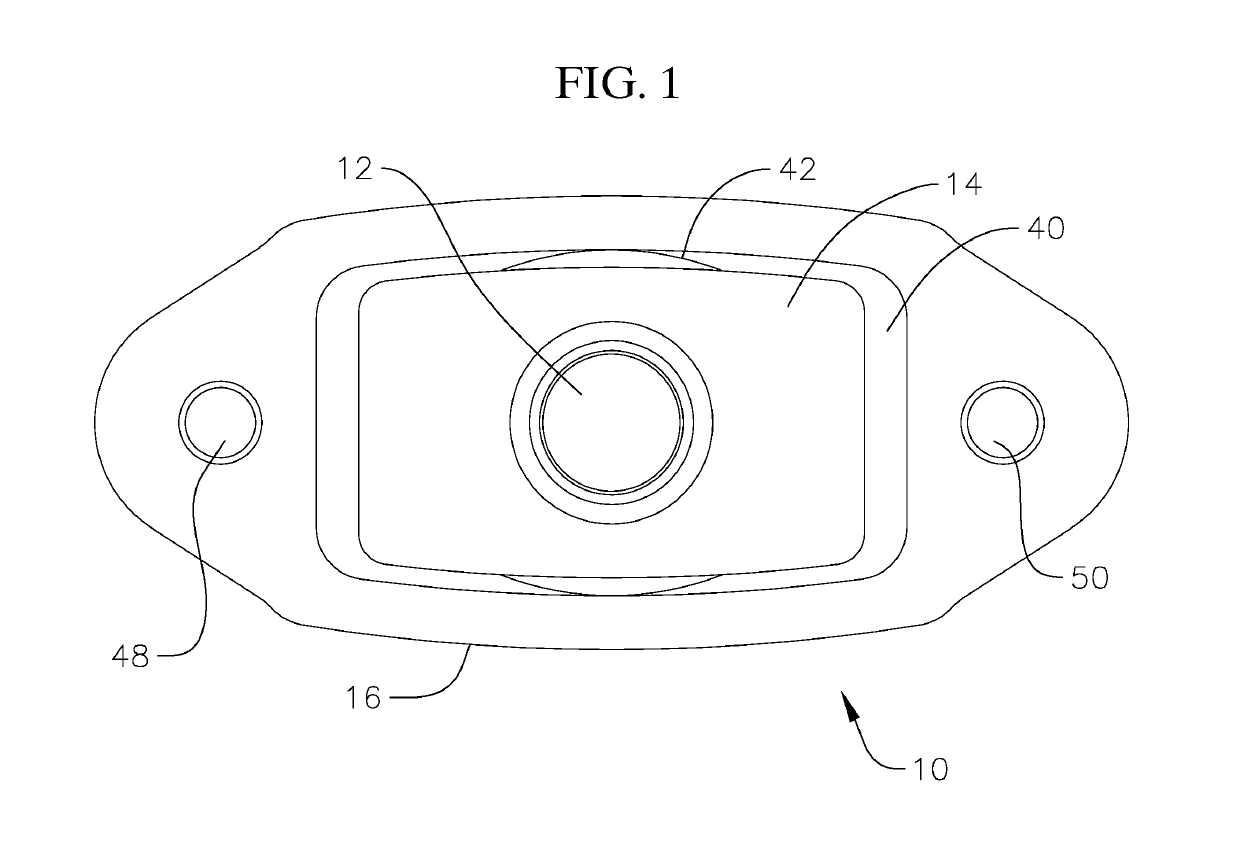Fastening system allowing component removal after fastener system failure
a fastening system and component technology, applied in the direction of threaded fasteners, load-modified fasteners, screws, etc., can solve the problems of high failure rate of the fastening system, no longer secure the box cover, and many deliberately damaged boxes/cover units installed, etc., to achieve easy and inexpensive replacement, easy and inexpensive entry, and easy and cheap
- Summary
- Abstract
- Description
- Claims
- Application Information
AI Technical Summary
Benefits of technology
Problems solved by technology
Method used
Image
Examples
Embodiment Construction
[0017]Referring to FIGS. 1 and 2 the fastening system 10 of the present invention is illustrated. The fastening system comprises a bolt 12, a nut 14 and a nut retainer 16. The fastening system 10 is utilized to attach a lid or cover to an underground or grade-level vault, pit, chamber or box which will be discussed in more detail subsequently herein. Bolt 12 is typically a lag bolt having course threads 18 for engagement with the nut 14 positioned in a thread engagement section 22 of a hole 24 extending through the nut. The threads of the bolt will cut into the thread engagement section of the nut during installation thereby forming threads in the nut.
[0018]The bolt 12 includes a head 19 which can be a traditional head design or can include tamper-resistant features such as, for example, a Penta head design which requires specialized tools to manipulate. Bolts with fine threads can also be utilized for the fastener. Hole 24 extending through the nut includes a bolt lead-in chamfer 2...
PUM
 Login to View More
Login to View More Abstract
Description
Claims
Application Information
 Login to View More
Login to View More - R&D
- Intellectual Property
- Life Sciences
- Materials
- Tech Scout
- Unparalleled Data Quality
- Higher Quality Content
- 60% Fewer Hallucinations
Browse by: Latest US Patents, China's latest patents, Technical Efficacy Thesaurus, Application Domain, Technology Topic, Popular Technical Reports.
© 2025 PatSnap. All rights reserved.Legal|Privacy policy|Modern Slavery Act Transparency Statement|Sitemap|About US| Contact US: help@patsnap.com



